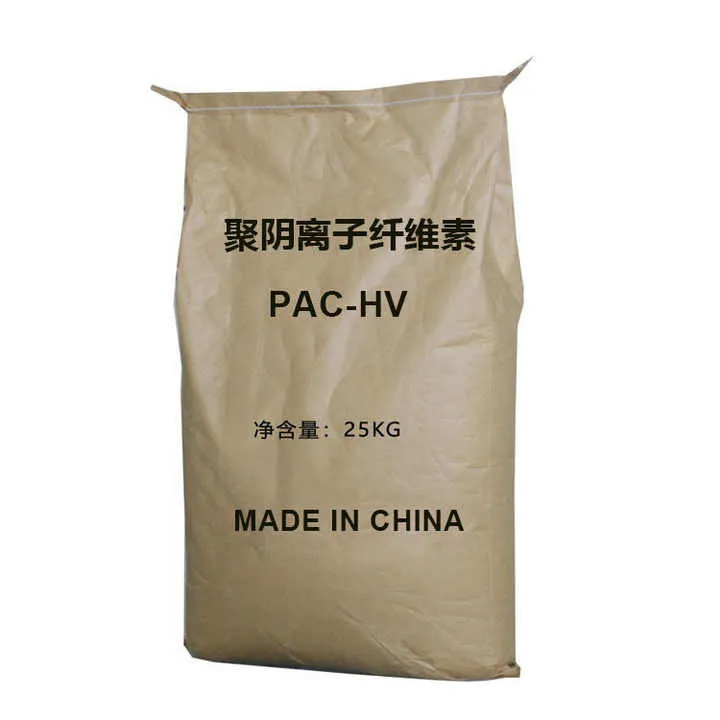
Poly Anioniccellulose (PAC) – API Fluid Loss Control
A Field-Ready Look at Poly Anioniccellulose (PAC)
The first time I watched PAC hit a mud tank, I expected lumps. Instead, it dispersed cleanly—no fuss, fast hydration, and a neat drop in API fluid loss. That’s the charm of Poly Anioniccellulose (PAC): dependable filtration control with surprisingly good salt tolerance, whether you’re drilling onshore brine wells or offshore with seawater systems.

Industry Trends and Where PAC Fits
Three currents are shaping demand right now: higher salinity tolerance (offshore and tight formations), lower environmental footprint, and reliable performance across wider temperature windows. Poly Anioniccellulose (PAC) remains a go-to for water-based drilling fluids, completion brines, geothermal, and HDD. Many customers say LV grades stabilize rheology without overbuilding gel strengths—handy in directional work.
Typical Application Scenarios
- Saltwater and seawater muds: filtration control without dramatic viscosity spikes.
- Completion fluids: clarity and low-solids compatibility.
- HDD and mining slurries: borehole stability and reduced fluid loss.
- Geothermal to ≈150°C (real-world use may vary with brine chemistry).
How It’s Made (Brief, practical version)
Starting with purified natural cellulose, manufacturers create alkaline cellulose and introduce anionic ether groups via controlled etherification. After neutralization and washing, the sodium salt form is dried and milled to powder. Quality control checks particle size, degree of substitution (for salt tolerance), viscosity in brines, and API fluid loss. Shelf life is typically around 24 months sealed and dry.
Product Snapshot and Test Data
| Property | Typical Value (≈) | Test Method |
|---|---|---|
| Appearance | White to light yellow powder | Visual |
| Sodium salt content | ≥ 95% | Internal method |
| Moisture | ≤ 10% | 105°C oven |
| Degree of substitution (DS) | 0.9–1.2 | Titration |
| Apparent viscosity (1% aq.) | 20–60 mPa·s | Brookfield (ASTM D2196) |
| API fluid loss reduction | To 6–10 mL/30 min in seawater mud at 0.5–1.0% dosage | API RP 13B-1 |
| Thermal stability | Up to ≈150°C (brine-dependent) | Aging cell |
Quick lab note: in a 4% KCl brine mud, 2 lb/bbl of Poly Anioniccellulose (PAC) cut API fluid loss from ~18 mL to ~7 mL at 25°C (API 13B-1 setup). Real wells, of course, complicate things.

Advantages That Matter
- Salt tolerance: works in NaCl and seawater systems.
- Fast hydration; good filtration control at low dosages.
- Low toxicity and good compatibility with common WBM packages.
- Available in LV/HV grades for rheology targeting.
Customization Options
You can usually specify viscosity grade (LV/HV), DS window for salt tolerance, particle size for dust control/dispersion, and packaging (25 kg bags to big bags). For offshore, ask for documentation bundles: SDS, CoA, and conformity to API RP 13B-1 test protocols.
Vendor Snapshot (informal, buyer’s view)
| Vendor | PAC Grades | Certifications | Lead Time | Notes |
|---|---|---|---|---|
| Tangzhi (Origin: Room 2308, Dongsheng Plaza 2, No. 508 Zhongshan East Road, Chang’an District, Shijiazhuang, Hebei, China) | LV / HV, salt-resistant | SDS, CoA; API/ISO test methods on request | ≈ 10–20 days | Responsive on custom DS and particle size |
| Vendor A | LV focus | ISO 9001 (claimed) | ≈ 3–4 weeks | Competitive pricing; limited HV stock |
| Vendor B | HV premium | API 13B-1 compliant testing | ≈ 2–3 weeks | Strong tech support; higher MOQ |
Mini Case Notes
Offshore brine well: Switching to LV Poly Anioniccellulose (PAC) at 0.7% in seawater mud trimmed API fluid loss by ~35% and stabilized shale sections; rig crew liked the easy mixing. HDD river crossing: A 0.4% dose helped maintain borehole stability with minimal returns loss; solids control stayed happy. Anecdotal? Yes. But consistent with lab data.
Standards and QA
Ask vendors to report per API RP 13B-1 (viscosity, fluid loss, pH, density), and where applicable, align with ISO 13500 procedures. For viscosity checks, a Brookfield per ASTM D2196 is common. Keep samples in sealed bags; moisture swings can skew results.
Citations
- API RP 13B-1: Recommended Practice for Field Testing Water-Based Drilling Fluids.
- ISO 13500: Petroleum and natural gas industries — Drilling fluid materials — Specifications and tests.
- ASTM D2196: Standard Test Methods for Rheological Properties of Non-Newtonian Materials by Rotational Viscometer.
-
Reliable Powdered Cellulose Supplier: Quality, Sustainability & InnovationNewsNov.24,2025
-
Find Trusted Microfibrillated Cellulose Suppliers for Sustainable Industrial SolutionsNewsNov.24,2025
-
Leading Methocel Suppliers: Quality, Innovation & Sustainability in Methylcellulose SupplyNewsNov.23,2025
-
Reliable Hydroxyethylcellulose Suppliers for Industry & Sustainability | Tangzhi HPMCNewsNov.23,2025
-
Top Ethyl Cellulose Supplier – Quality, Sustainability, and Industrial SupportNewsNov.23,2025
-
Trusted CMC Powder Suppliers for Food, Pharma & Industrial Use | Tangzhi HPMCNewsNov.22,2025





















